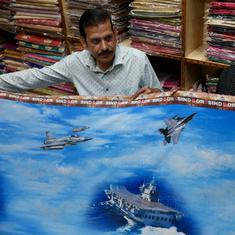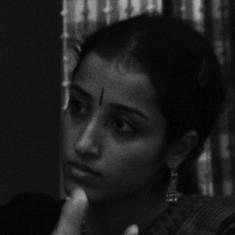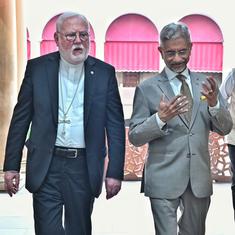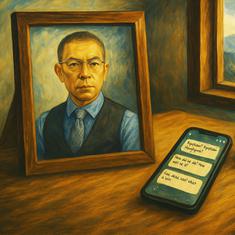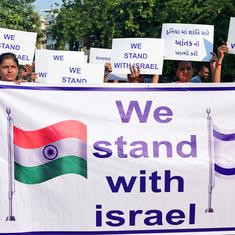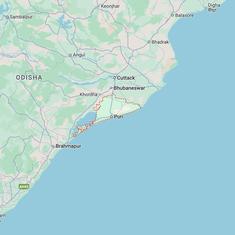A photography exhibition at Mumbai’s Chhatrapati Shivaji Maharaj Vastu Sangrahalaya marks a homecoming of sorts for the Germany-born cinematographer Josef Wirsching’s personal collection of film memories. A Cinematic Imagination displays 145 photographs shot primarily on 35mm with a Leica camera between the 1930s and ’40s when Wirsching was employed at the Bombay Talkies company founded by Himansu Rai and Devika Rani.
This beautifully preserved treasure trove of behind-the-scenes moments from shoots, publicity pictures of actors, and film production stills has never been shown in Mumbai before. They were first exhibited in collaboration with the Alkazi Collection of Photography in Panaji in 2017, followed by Chennai in 2019 and Delhi in 2020.
Wirsching shot many of Bombay Talkies’ best-known films, including its first production, 1935’s Jawani Ki Hawa. Devika Rani features prominently in the Wirsching collection, alongside other illustrious studio alumni such as Ashok Kumar and Madhubala.
The collaboration lasted until 1959, after which Wirsching worked with other filmmakers, including Kamal Amrohi. (Wirsching had previously shot Amrohi’s Mahal for Bombay Talkies in 1949).
Wirsching was shooting Amrohi’s Pakeezah when he died in 1967. Wirsching’s son, Wolfgang Peter, ensured the survival of his father’s collection until his own death in 2016. Wirsching’s grandsons Josef and Georg are now the keepers of a wondrous legacy.

The Mumbai exhibition also marks the release of Bombay Talkies: An Unseen History of Indian Cinema. The Mapin publication has 165 photographs as well as six essays on the studio’s contributions to cinema.
In a foreword, Georg Wirsching writes about the care taken by his father Peter to preserve an invaluable record of the past: “With every change in geographical location, almost every other year, Peter would open the trunk to check on the condition of the photographic material inside. It contained photographic prints, roll of negatives and albums of photographic images accumulated in India over the years preserved in a waterproof steel trunk. It is this legacy that we, the descendants of Josef Wirsching, wish to share with the world so that everybody may understand his contributions, and that through simplicity, humility and dedication a lot can be achieved.”

Bombay Talkies: An Unseen History of Indian Cinema is edited by Debashree Mukherjee, Associate Professor at Columbia University in New York and author of Bombay Hustle: Making Movies in a Colonial City. In her introductory essay to Bombay Talkies, Mukherjee writes about the importance of Wirsching’s preservation instinct: “These photographs, most of them taken on film sets and outdoor locations, show us a world of meaning that was never intended to be projected on the silver screen.”
The photographs create new frameworks for studying India’s cinematic heritage, Mukherjee adds: “Seeing images of film practitioners immersed in the world of making movies, attempting to build a new local industry and shape a new art form, unsettles our assumptions about the past in fundamental ways. For one thing, these images show us that early filmmaking in India was often organizationally and technically robust despite the well-known challenges of finance and infrastructure. We are also confronted with the fact that the pioneers of Indian cinema belonged to many different classes, religions, castes genders, even nationalities, and it would be false to demand a superficial authenticity from the past.”
About Wirsching, Mukherjee commends his “cinematic eye for drama” that led him to use different lighting techniques and his “luminous framing of heroines”. She adds, “Wirsching also proved adept at outdoor location shooting and made full use of the studio’s Bombay location to film the natural landscapes of the Western Ghats.”

Mukherjee has co-curated A Cinematic Imagination along with Rahaab Allana. In an email interview, Mukherjee discusses the importance of the exhibition as well as the book, and the links between Bombay Talkies and Bombay Hustle. Here are edited excerpts.
The Josef Wirsching collection is coming home, in one sense, having never been shown in Mumbai before. What resonance does A Cinematic Imagination have for Mumbai residents?
Debashree Mukherjee: This does feel like a homecoming because not only does this photo archive centrally depict the filmmaking journey of Bombay Talkies studio, but it also gives us a slice of the city’s history as seen through the lens of film production.
BT was set up in 1934 in Malad, which at the time was largely rural and agricultural. The exhibition has been hosted at the CSMVS, far from Malad but still very spatially poignant.
Next door, right across the street on Colaba Causeway is the Majestic Hotel, where Josef Wirsching stayed on one of his first visits to the city. Down the street behind Flora Fountain is Readymoney Mansion, where Himansu Rai set up the corporate address for his studio, because the “ready money” deals with financiers were better situated in the business district rather than in Malad. And all around the museum are iconic city spaces that were liberally shot in BT’s early films – for example, the Gateway of India where a large portion of BT’s comedy film Always Tell your Wife/Miya Biwi (1936) was shot.
Of course, the show is also a testament to the energetic entrepreneurs, creative talents, and OG gig workers who helped build Mumbai’s massive media industries.

Is there a continuum between Bombay Hustle and Bombay Talkies, in terms of your interest in the industrial aspects of filmmaking, Hindi cinema’s spatial spread, and the contributions of workers and technicians?
Debashree Mukherjee: Yes, I discovered this archive of photographs when I was researching the broader history of filmmaking in the 1930s for (what would eventually become) my book Bombay Hustle.
My interest, as a former film practitioner, was centrally in a material history of Bollywood, by which I mean the actual techniques, technologies, infrastructure, and labor that went into consolidating an emerging aesthetic and industrial form. You can see this in my thematic curation of the show – with a focus on relationships and material movements of people (“Exile, Encounters, Belonging”), on work and labor (“Techniques & Craft”), and with the overwhelming focus on behind-the-scenes images of collaboration and the messy stuff of movie-making.
In your essay in Bombay Talkies, you write about the remarkable sets and production design used in Bombay Talkies films. Did any of their competitors produce such work?
Debashree Mukherjee: One of the real tragedies of our cinema history is the loss of actual films. It is possible to watch a majority of BT films because they have been preserved at the National Film Archive of India, but we cannot see so many films made by their very successful peer studios such as Ranjit Movietone or Sagar Movietone as their films are considered to be lost forever.
Still, I know from publicity stills in song booklets that Ranjit often shot in outdoor locations such as Marine Drive and Apollo Bunder, Sagar Movietone shot street scenes near Churchgate, and both studios also shot extensively on built indoor sets. These studios, along with Wadia Movietone, were major competitors for BT.

What was your personal experience of meeting Josef Wirsching’s descendants?
Debashree Mukherjee: I met the Wirschings in 2013 when I was on a research trip from New York. Since 2008 I had been trying to locate people who had worked in the 1930s film studios, which is nearly impossible because most people from that time have passed on.
But I often found amazing stories, even documents, from their families. That is how I landed up at the Wirschings’ home in Moira, Goa, looking for Josef Wirsching. I found his son instead, Wolfgang Peter Wirsching, who had spent many childhood years at the Malad studio complex and even drew a map of the studio for me based on his memory!
That map confirmed what I had found elsewhere about the three sound stages at BT, its laboratory and canteen, its preview theatre etc. Wolfgang Peter’s sons, Josef and Georg, had taken on the mantle of preserving, cataloging, and digitising their granddad’s photographic collection, and Georg has been single-mindedly dedicated to this pursuit for a long time.
While the visual material they have is rare, what is special is that they had the vision to recognise the historical value of the material and the drive to promote their grandfather’s cinematic legacy. Mumbai is full of film families, but very few of them have made a real effort to document their past, either due to lack of resources or due to lack of interest or that permanent Bombay problem – lack of time!

There has been renewed interest in the Bombay Talkies studio in recent times. There’s Lillette Dubey’s play Devika Rani, there’s Kishwar Desai’s book The Longest Kiss. The web series Jubilee explores an alt-history of the studio’s legacy. Why does Bombay Talkies endure in memory?
Debashree Mukherjee: BT endures in memory for several reasons – mainly because of its very glamorous star and producer, Devika Rani, who was a stunning beauty but also a notorious boss lady. Everyone knows the story of her elopement with Najmul Hussain, but only a few remember that she was a star-maker who discovered Dilip Kumar.
BT is also special because of its transnational and transregional crew – technicians from Germany and France (Madame Andree), its writers and actors from Lucknow and Lahore, its hiring of a woman music director (Saraswati Devi/Khorshed Homji). BT’s films of the late 1930s set the template for the light-hearted five-song love story formula that has lingered as the most enduring structure in Bollywood cinema.
I loved Jubilee for its cinematic ambition and scale of production, for lavishing such care on an era that is very dear to me and should be important for anyone who loves Bombay cinema. I have no problem with a creative mixing up and repurposing of film history. But I was disappointed with the showrunners for privileging a cliched “male pioneer” narrative when there were so many strong women at the time with real creative and financial power.

Also read:
In book on early Indian cinema, a look at the romance and risk that went into filmmaking

